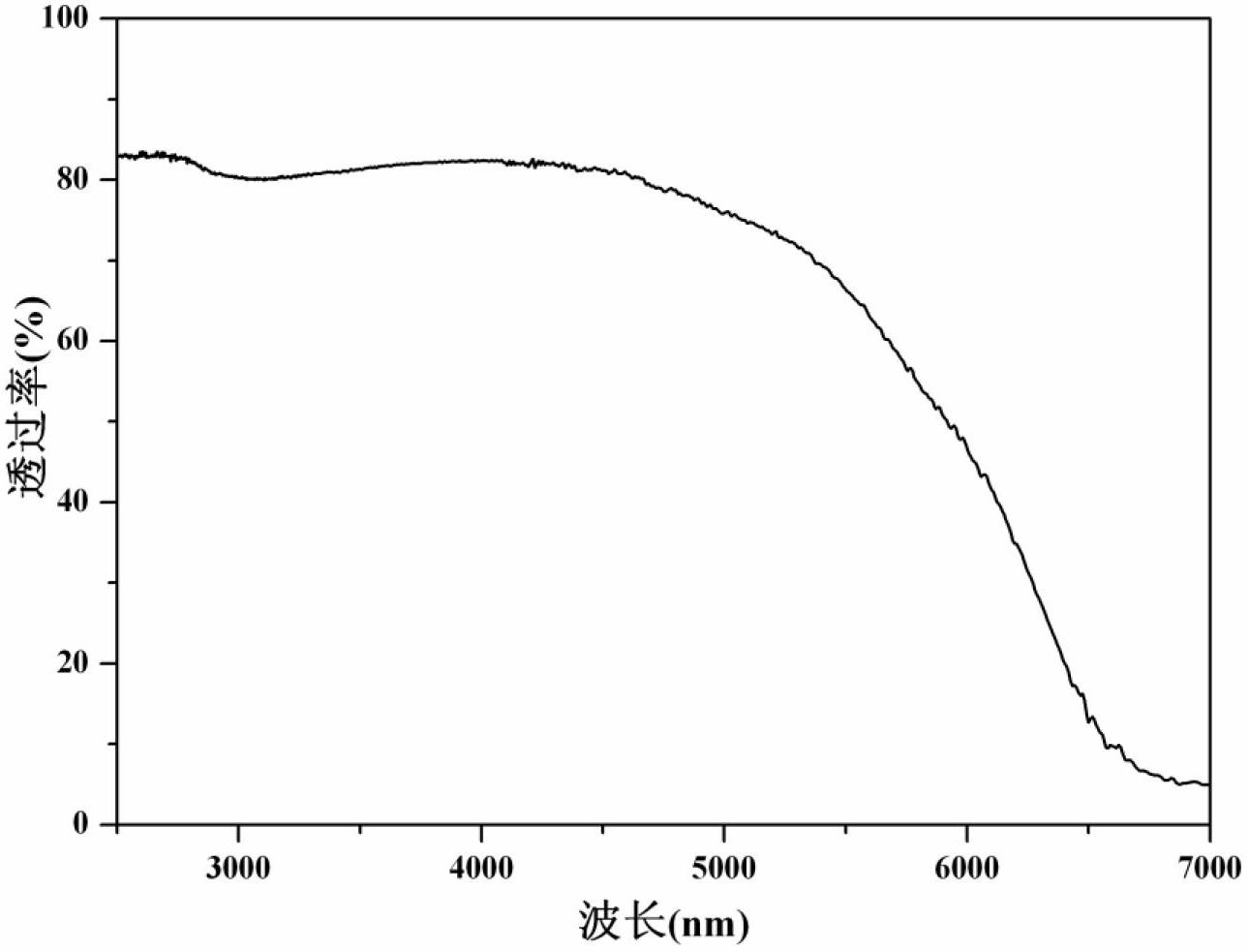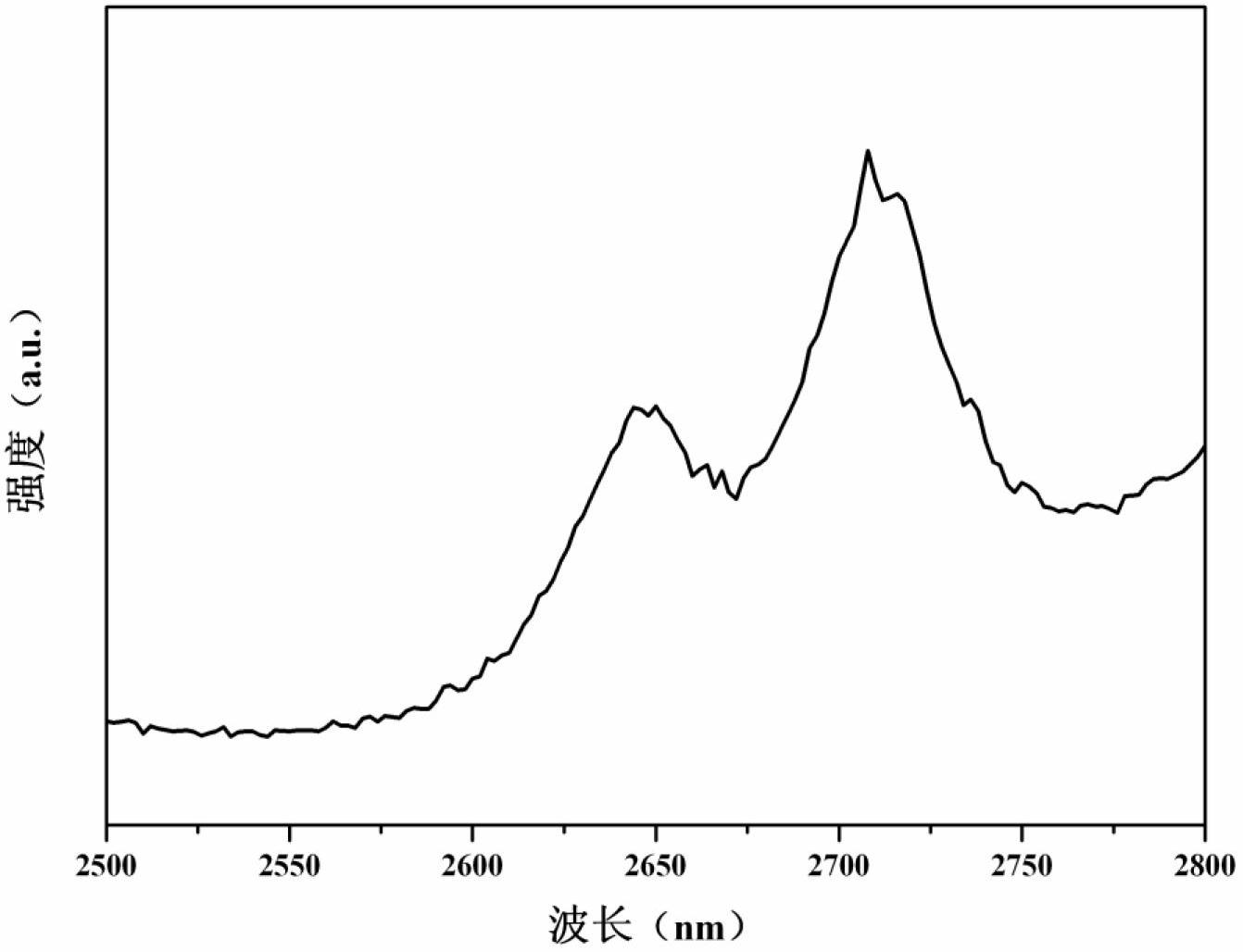3 mu m rare earth ion doped bismuth-germinate laser glass and preparation method thereof
A technology of bismuth germanate and laser glass, which is applied in the field of bismuth germanate laser glass and its preparation, to achieve the effect of good infrared transmission ability and uniform physical and chemical properties
- Summary
- Abstract
- Description
- Claims
- Application Information
AI Technical Summary
Problems solved by technology
Method used
Image
Examples
Embodiment 1
[0023] Composition is as shown in 1# in table 1, and concrete preparation process is as follows:
[0024] According to the molar percentage of the 1# glass composition in Table 1, calculate and weigh the weight of each composition, weigh each raw material and mix them evenly; put the mixture into a corundum crucible and place it on a silicon carbide rod at 1050°C~1100°C Melt in an electric furnace, clarify for 15 minutes after complete melting, and pour the molten glass on the preheated mold; after a little cooling, quickly move it into a muffle furnace with a temperature of 400 ° C, keep it warm for 3 hours, and then use a temperature of 10 ° C / hour The rate was lowered to room temperature, and the glass sample was taken out after complete cooling.
[0025] The test results for this glass are as follows:
[0026] Take a small sample after annealing, grind it into a fine powder with an agate mortar, and conduct a differential thermal analysis test. The differential thermal...
Embodiment 2
[0029] Composition is as shown in 2# in table 1, and concrete preparation process is as follows:
[0030] According to the molar percentage of the 2# glass composition in Table 1, calculate and weigh the weight of each composition, weigh each raw material and mix evenly; put the mixture into a corundum crucible and place it in a silicon carbide rod electric furnace at 1050°C~1100°C Melt in medium temperature, clarify for 15 minutes after complete melting, pour the molten glass on the preheated mold; after a little cooling, quickly move it into a muffle furnace with a temperature of 400°C, keep it warm for 3 hours, and then drop it at a rate of 10°C / hour Take out the glass sample after cooling completely at room temperature.
[0031] The test results for this glass are as follows:
[0032] Take a small sample after annealing, grind it into a fine powder with an agate mortar, and conduct a differential thermal analysis test.
[0033] The annealed sample was processed into a 10...
Embodiment 3
[0035] Composition is as shown in 3# in table 1, and concrete preparation process is as follows:
[0036] According to the molar percentage of the 3# glass composition in Table 1, calculate and weigh the weight of the corresponding components, weigh each raw material and mix evenly; put the mixture into a corundum crucible and place it in a silicon carbide rod electric furnace at 1050°C~1100°C Melt in medium temperature, clarify for 15 minutes after complete melting, pour the molten glass on the preheated mold; after a little cooling, quickly move it into a muffle furnace with a temperature of 400°C, keep it warm for 3 hours, and then drop it at a rate of 10°C / hour Take out the glass sample after cooling completely at room temperature.
[0037] The test results for this glass are as follows:
[0038] Take a small sample after annealing, grind it into a fine powder with an agate mortar, and conduct a differential thermal analysis test.
[0039] The annealed sample was process...
PUM
 Login to View More
Login to View More Abstract
Description
Claims
Application Information
 Login to View More
Login to View More - R&D
- Intellectual Property
- Life Sciences
- Materials
- Tech Scout
- Unparalleled Data Quality
- Higher Quality Content
- 60% Fewer Hallucinations
Browse by: Latest US Patents, China's latest patents, Technical Efficacy Thesaurus, Application Domain, Technology Topic, Popular Technical Reports.
© 2025 PatSnap. All rights reserved.Legal|Privacy policy|Modern Slavery Act Transparency Statement|Sitemap|About US| Contact US: help@patsnap.com



